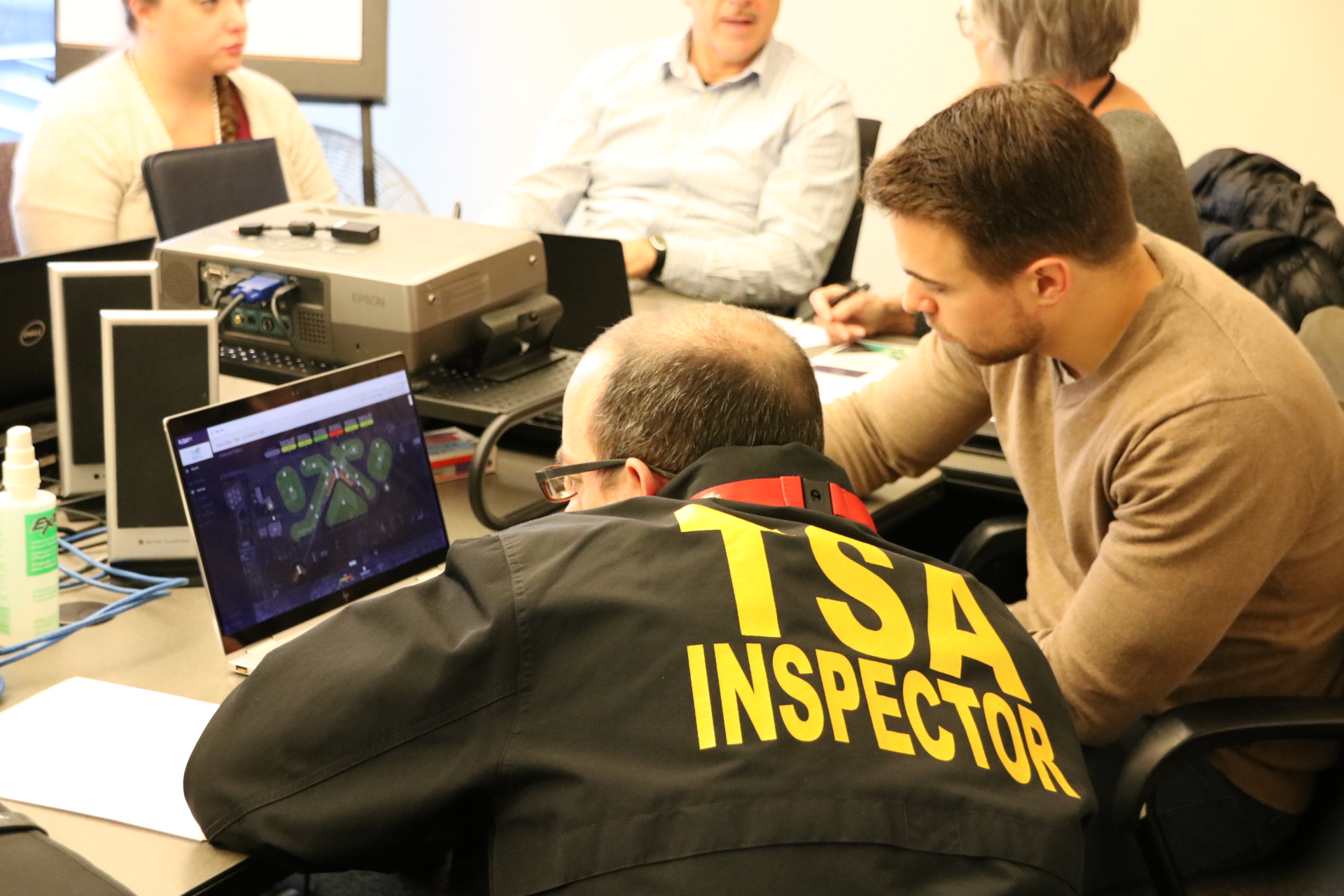Technology Overview
As millions of people travel through our nation’s airports every day, diverse security assets combine to keep them safe. The Airport Risk Assessment Model (ARAM) can determine where and when to allocate those resources with the push of a button.
ARAM is an advanced risk modeling and assessment tool that helps airport security stakeholders prioritize the use of their resources based on evolving threats. Risk is quantified as a function of threat, vulnerability, and consequence at each area of a given airport. Overall airport risk is the sum of the risk at all these areas. From this, total risk can be calculated for the airport each hour and for the whole day. ARAM uses this risk assessment to dynamically recommend assignments for security countermeasures during the day.
With a user-friendly interface accessible via a mobile device, ARAM quickly calculates the needs and best assignment of security assets—personnel, canines, and other countermeasures—that work together in innumerable combinations to keep passengers and the airport safe and secure. ARAM also randomizes a percentage of the assignments, which increases deterrence and prevents an adversary from predicting countermeasures.
Licensees can personalize ARAM to determine security resource allocations at their facility. ARAM ingests and automatically integrates different data sources, such as flight schedules and passenger and airport volume, along with intelligence data, threat information, and resource availability. The web-based tool then recommends where to best deploy security assets on an hourly basis—a capability unmatched by other resource allocation tools.
The technology was built on expert input and intel to quantify the risk of terrorism and optimize the distribution of security assets throughout the airport in response. The tool is mathematically rigorous but user-friendly, enabling security personnel to work more efficiently with the resources they have.
Advantages
- Delivers data-driven, risk-based decision analytics for resource allocation that minimizes vulnerabilities and maximizes security and cost savings.
- Employs mathematically rigorous, risk-based approach that avoids duplication of effort with an element of randomization to deter adversaries.
- Automatically integrates different data sources, such as flight schedules and passenger and airport volume, along with intelligence data, threat information, and resource availability.
- Offers easy-to-use, web-based tool and visualizations to recommend where to best deploy security assets on an hourly basis.
State of Development
ARAM has applicability at any airport and already has the nation’s top 100 airports set up. It can be extended to other transportation venues, as well. The tool builds on a risk assessment model initially developed for a ferry transportation system.
Funded by the Department of Homeland Security and in partnership with the Transportation Security Administration, PNNL piloted ARAM at the Seattle-Tacoma International Airport, which serves 49 million travelers annually. User feedback has driven usability improvements in the tool.
In 2025, ARAM was awarded the Gold Medal in the R&D 100 Awards Special Recognition category of Market Disruptor, highlighting ARAM’s breakthrough capabilities and its potential to drive meaningful real-world benefit.

